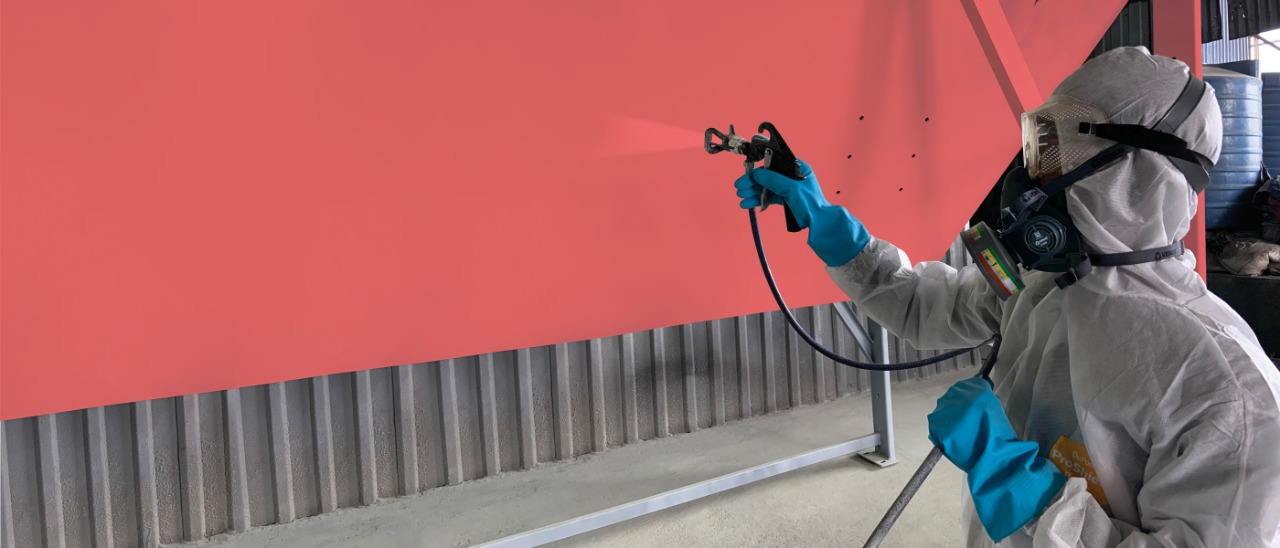The evolution of PILOT’s airless spray systems technology represents a pivotal shift in how industries approach painting and surface coating applications. Faced with increasing demands for efficiency, precision, and environmental sustainability, modern industrial sectors have turned to innovations in airless spray technology as a solution. This technology, known for its ability to deliver uniform coatings at high speeds with or without the use of compressed air, has been instrumental in meeting the challenges of today’s fast-paced and environmentally conscious market. Let’s delve into how these innovations are reshaping industrial applications and setting new benchmarks for performance and sustainability.

High-Efficiency Transfer Rates
PILOT’s hallmarks of airless spray technology is its exceptional transfer efficiency. Unlike traditional spray systems that can suffer from overspray and material wastage, airless spray systems propel paint or coating materials directly onto the target surface with minimal overspray. This efficiency not only reduces waste but also ensures that more of the material ends up on the workpiece, improving coverage and reducing costs associated with excess material use.
Enhanced Precision and Control
PILOT’s airless spray systems offer enhanced precision and control over the application process. With advancements in pump and nozzle designs, operators can achieve consistent spray patterns and coating thickness, which is crucial in applications where uniformity is key to product quality. The ability to precisely control pressure and flow rates allows for a wide range of materials to be applied, from thin stains to thick elastomeric coatings, without compromising on quality or efficiency.
Versatility Across Industries
The versatility of PILOT’s airless spray technology has made it a favoured choice across various industries. From large-scale manufacturing lines in the heavy industrial sector to coatings and finishing work in architecture and infrastructure, airless systems can be adapted to meet diverse application needs. This adaptability extends to the materials used, with airless technology capable of handling a broad spectrum of paints, enamels, varnishes, protective coatings and even wall putties.
Reducing Environmental Impact
As industries strive to reduce their environmental footprint, airless spray technology offers a viable path forward. The high transfer efficiency of airless systems minimizes waste and overspray, leading to less environmental pollution. Furthermore, the ability to apply coatings without solvents or with reduced solvent content helps lower volatile organic compound (VOC) emissions, aligning with stricter environmental regulations and sustainability goals.
Technological Integration and Automation
The integration of digital technologies and automation with airless spray systems represents a significant leap forward in industrial coating applications. Smart systems can automatically adjust parameters for optimal application, predict maintenance needs, and ensure consistent quality across production runs. This integration not only boosts efficiency and reduces downtime but also supports the move towards Industry 4.0 and smart manufacturing practices.
Meeting Modern Challenges
Innovations in airless spray technology are directly addressing the challenges posed by modern industrial demands. The push for higher productivity, the need for efficient surface coatings and the imperative of environmental sustainability are all met with the capabilities of advanced airless systems. As technology continues to evolve, we can expect airless spray systems to become even more integral to industrial processes, driving efficiencies and supporting sustainable practices.

Conclusion: The Future is Airless Spray Systems
PILOT’s innovations in airless spray technology are not just reshaping industrial painting and coating applications; they’re setting a new standard for what’s possible. As industries look to the future, the benefits of airless spray systems—efficiency, precision, versatility, and sustainability—place them at the forefront of solutions capable of meeting the evolving demands of the modern world. With ongoing advancements and a commitment to addressing industrial challenges, airless spray technology is poised to continue its trajectory of transformative impact, ensuring that industries can achieve their goals with greater effectiveness and reduced environmental impact.

Recent Comments